Group Homes for Autistic Adults
Expanding Supportive Housing Solutions for Adults on the Autism Spectrum
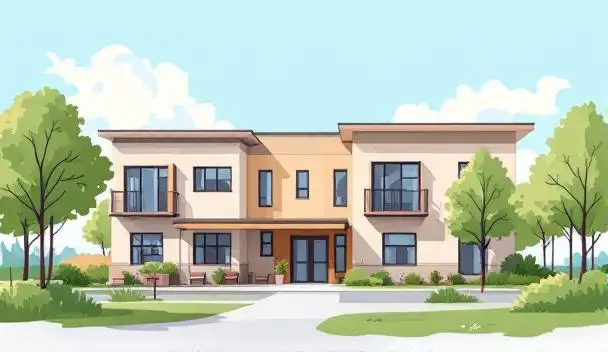
Understanding Housing Options Tailored for Autistic Adults
As more adults with autism seek independence and community integration, the landscape of housing options has evolved significantly. From traditional group homes to innovative neuro-inclusive communities, tailored housing solutions aim to enhance quality of life, promote social connection, and ensure safety. This article explores the variety of residential models, available resources, and supportive services critical for planning and accessing suitable housing for autistic adults.
Diverse Housing Models for Autistic Adults
What are the housing options and models available for autistic adults?
Autistic adults have access to a broad spectrum of housing options designed to suit different levels of independence and support needs. These include single-family homes, apartments, cooperative housing (co-ops), group homes, and supported living arrangements. Each model is tailored to provide varying degrees of assistance, from minimal support for those living independently to more structured environments that offer round-the-clock supervision.
Single-family homes and apartments are common for adults who manage most daily tasks independently or with minimal support. Co-operatives or co-ops involve residents owning or sharing ownership of the property while employing support staff as needed. Group homes typically accommodate 2-10 residents and provide support services like assistance with daily routines, social skills, and supervision, often licensed and operated by state agencies.
Beyond these traditional options, specialized residential environments have emerged to promote community engagement and skill development. Farmstead Communities, for example, combine residential living with participation in a working farm, fostering independence and social connection. Teaching Family Homes emulate family-style living with professional support, and Assisted Living Facilities offer assistance with daily activities without requiring complex medical care.
These models are supported by a range of community and government programs, such as Medicaid Home & Community Based Services (HCBS) and Section 8 vouchers, which aim to improve affordability and access. Despite these efforts, the supply of community-based support remains limited, with many adults still living in family homes or facing challenges to move into independent or supported housing.
The ongoing focus is on expanding diverse and inclusive housing options. Efforts involve creating innovative communities like neuro-inclusive apartments, cohousing developments, and scattering supportive units across neighborhoods. These initiatives aim to foster independence, social integration, and a sense of belonging among autistic adults.
Range of models from independent living to supervised group settings
Various residential support models address the spectrum of needs that autistic adults may have.
| Housing Model | Description | Support Level | Typical Residents | Additional Details |
|---|---|---|---|---|
| Independent Living | Minimal or no support, autonomous housing arrangements. | Minimal support | Autistic adults able to manage daily life independently. | Often involves private rentals or ownership. |
| Supported Living | Provides assistance with daily tasks while promoting independence. | Variable support, mostly minimal to moderate. | Adults needing some assistance but capable of living semi-independently. | Supported through home visits or drop-in services. |
| Supervised Group Homes | More structured environment with staff support, possibly 24/7. | Intensive, 24/7 or scheduled. | Individuals with moderate to high support needs. | Licensed by states, often housing 2-10 residents. |
| Co-operative Housing (Co-op) | Residents collectively own or manage their housing with employed support staff. | Varies, usually moderate support. | Adults ready for shared ownership and responsibilities. | Emphasizes community involvement and shared decision-making. |
| Farmstead Communities | Residential settings within working farms that foster engagement and learning. | Varies, often comprehensive support. | Adults seeking a therapeutic, community-based environment. | Combines residence with farm work and community activities. |
| Teaching Family Homes | Family-style living with professional supports similar to family environments. | 24/7 support. | Adults requiring constant supervision. | Emphasizes family-like support structures. |
| Assisted Living Facilities | Provide support with daily activities without advanced medical care. | Moderate support. | Adults needing assistance but not intensive medical support. | Focuses on community and independence within a supportive setting. |
| Institutional Settings | Large facilities such as nursing homes or developmental centers. | High, medical, and support services. | Residents with complex medical needs. | States are decreasing reliance on these settings in favor of community options. |
Specialized environments like Farmstead Communities, Teaching Family Homes, and Assisted Living Facilities
These innovative models are designed to meet specific needs of autistic adults who benefit from community-focused, engaging, and supportive environments. Farmstead Communities combine residential living with active participation in farming activities, promoting both independence and social skills.
Teaching Family Homes offer a nurturing, family-style atmosphere managed by trained professionals, providing a sense of stability and routine. Assisted Living Facilities serve adults who require assistance with daily routines but do not need intensive medical interventions. These environments exemplify the shift towards more inclusive, person-centered residential options.
Recent developments include neuro-inclusive apartment communities and cohousing setups where residents share common spaces and support each other. Such models aim to break down barriers, foster community ties, and promote greater autonomy.
The diversity of available housing options reflects a growing effort to accommodate the unique preferences and needs of the autistic adult community. Organizations like the Autism Housing Network, supported by the Madison House Autism Foundation, offer resources, developer tools, and a directory of housing solutions nationwide.
The goal remains to increase access, affordability, and quality of life, while encouraging community integration and supporting independence for autistic adults. Continued innovation and collaboration across sectors are essential to expanding these models and creating truly inclusive housing landscapes.
| Housing Feature | Examples | Support Type | Typical Residents | Special Notes |
|---|---|---|---|---|
| Resident Owned and Managed (Co-ops) | Co-ops, Family Homes | Moderate support, shared support | Adults prepared for shared management roles | Emphasizes community and shared ownership. |
| Farmstead and Therapeutic Communities | 29 Acres in TX, Farmstead Communities | Varies, often comprehensive support. | Adults seeking therapeutic, engaging environments. | Integrates living with farm work and therapy. |
| Neuro-Inclusive Apartments | Newly developed neuro-friendly apartment complexes. | Varies, often minimal to moderate support. | Adults seeking accessible, inclusive community living. | Designed with sensory-friendly features. |
| Scattered Site Housing | Units distributed across neighborhoods supported by agencies. | Support varies per arrangement. | Adults wanting integrated community participation. | Promotes neighborhood engagement. |
This array of housing options reflects ongoing efforts to meet the diverse needs of autistic adults, fostering independence, community engagement, and improved quality of life.
Supportive Resources and Funding for Residential Living
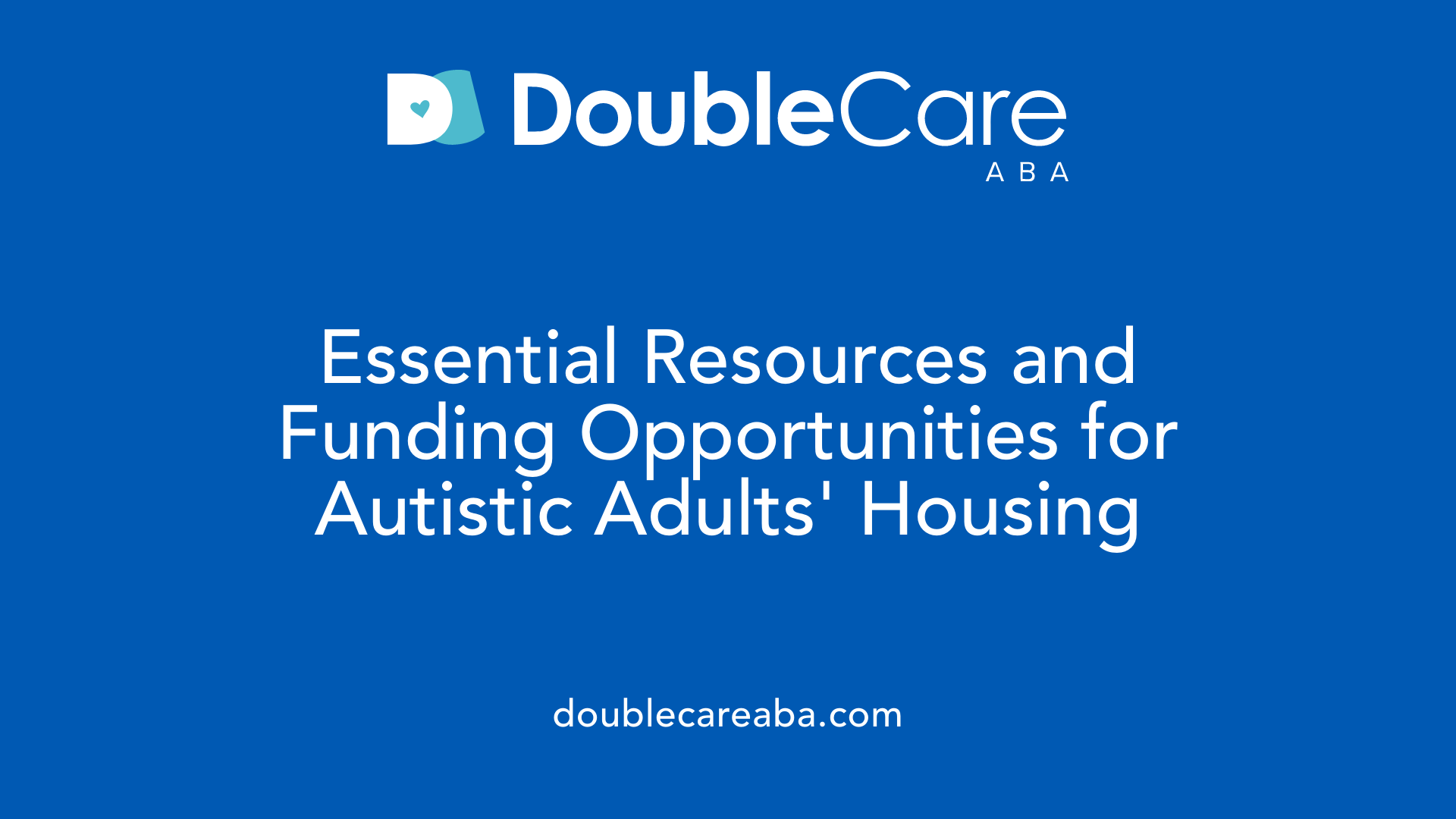
What resources and support services are available for residential living for autistic adults?
Autistic adults seeking residential options can access a wide range of resources and services designed to support their independence and well-being. Programs like Autism Speaks' tools, including the Transition Roadmap to Housing and Residential Supports, provide essential guidance on planning for housing and identifying appropriate support levels.
Various types of housing arrangements are available, such as supported living, shared apartments, group homes, and co-housing communities. These options can be tailored to meet individual needs, whether they require minimal assistance or more structured support. For instance, supported living accommodates individuals capable of independent living with some help, while supervised group homes offer more intensive, around-the-clock care.
Funding plays a crucial role in making these options accessible. Initiatives like Section 811 Supportive Housing provide federal assistance aimed at increasing affordable, accessible housing for people with disabilities. The Housing Choice Voucher program, also known as Section 8, subsidizes rent for eligible individuals, making it easier for low-income autistic adults to secure stable housing.
Public housing programs are another vital resource, offering low-cost options in various communities. In addition, Medicaid supports home and community-based services, covering some support and care costs related to daily activities, healthcare, and community participation.
Various federal, state, and private organizations collaborate to support housing access. The Autism Housing Network, for example, serves as a central hub providing housing information, developer tools, and resources to promote neuro-inclusive communities. Local agencies and organizations like the Autism Society of the San Francisco Bay Area support community-based autism housing options and work to expand and improve these services.
Support services extend beyond physical housing. They include assistance with daily tasks, healthcare coordination, employment support, social skills development, and community engagement. These services are often delivered through models like Supported Living, which promotes independence, or more supervised arrangements for those needing comprehensive care.
Despite the availability of these resources, current statistics reveal a significant gap. Only around 7% of autistic adults have access to supports that allow them to live outside the family home. Many adults report feelings of loneliness and depression, emphasizing the importance of expanding housing opportunities and support services.
In conclusion, efforts continue to improve access to a broad spectrum of housing options and support mechanisms. Advocacy and planning, supported by government programs and community organizations, are essential to creating inclusive living environments that foster independence, community participation, and quality of life for autistic adults.
Community-Based and Neuro-Inclusive Housing Models
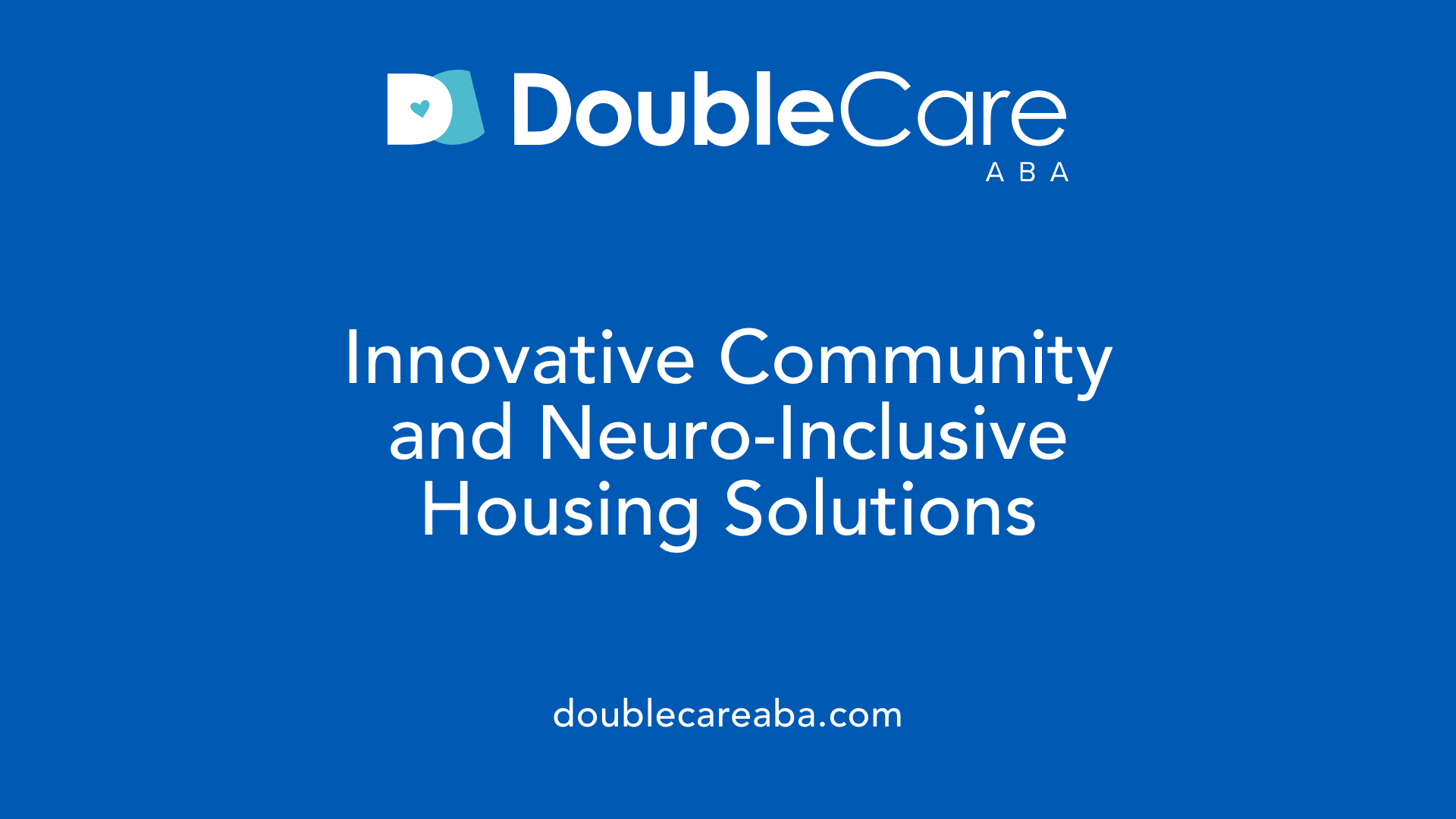
What are community-based and neuro-inclusive housing solutions for autistic adults?
Community-based and neuro-inclusive housing options are designed to create living environments that are accessible, supportive, and tailored to the diverse needs of autistic adults. These models emphasize inclusion and independence, helping individuals live meaningful lives within their communities.
A hallmark of these solutions is the integration of thoughtful design features. Buildings and neighborhoods may include sensory-friendly amenities such as calming lighting, noise reduction strategies, and spaces for relaxation. Natural settings like gardens and outdoor areas are prioritized, offering therapeutic benefits and a calming environment.
Supportive infrastructure may involve advanced technology like sensory aids, safety systems, and communication tools that address sensory, physical, and cognitive challenges. These features help residents navigate daily life with greater ease and confidence.
Partnerships with government programs such as the Section 811 Supportive Housing or Housing Choice Vouchers are crucial. They enable affordability, especially for low-income adults, ensuring more individuals can access quality housing options.
Organizations like the Autism Housing Network and the Madison House Autism Foundation advocate for a broader range of housing solutions. They support models such as group homes, scattered-site housing, cohousing communities, and innovative planned communities that promote social connection.
For example, scattered-site housing involves placing individuals in separate homes within diverse neighborhoods, promoting independence while maintaining community ties. Cohousing communities are intentionally designed neighborhoods where residents share common spaces and decision-making, fostering social bonds and mutual support.
Planned inclusive communities are thoughtfully developed with accessibility and integration as core principles, often featuring a mix of supports, amenities, and housing types suited for residents with varying needs.
These models aim to improve quality of life by encouraging inclusion, providing personalized support, and fostering natural social networks. They are part of a broader movement to develop supportive, welcoming environments that recognize and celebrate neurodiversity.
How do design features and partnerships enhance inclusivity?
Design elements like sensory accommodations and natural environments directly contribute to the comfort and well-being of residents. Partnerships with government agencies and nonprofit organizations expand access and ensure that housing options meet diverse needs.
Together, these innovative housing models and collaborative efforts are transforming the landscape for autistic adults, making community living not just a possibility but a flourishing reality for many.
Navigating Housing Options and Funding Mechanisms
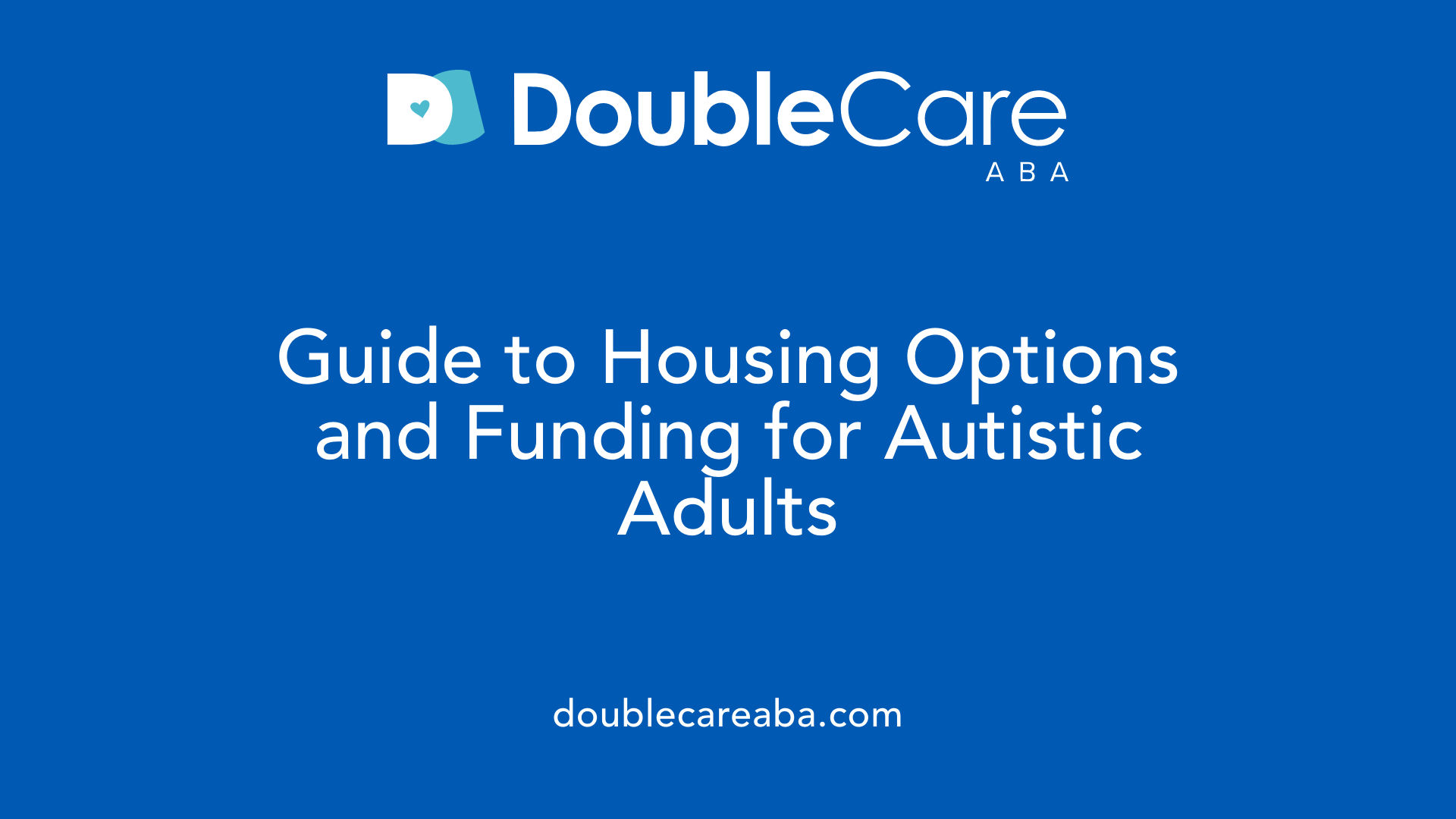
How can I find information about available housing options and funding sources for autistic adults?
Finding reliable information about housing and funding for autistic adults involves exploring multiple resources and agencies. Start with national organizations such as Autism Speaks, which offers tools like the Transition Roadmap to Housing and Residential Supports. These resources can guide you through the planning process and help identify appropriate housing types and supports.
The Autism Housing Network, a project of the Madison House Autism Foundation, is a valuable central hub offering detailed information on various housing models, including supportive living arrangements, group homes, cohousing, and neuro-inclusive communities. This platform provides developer tools, property listings, and community-building resources to support housing innovation.
Government agencies play a significant role in funding and supporting accessible housing. Federal programs like the Housing Choice Voucher Program (Section 8) and the Section 811 Supportive Housing initiative provide rental assistance and supportive housing options for adults with disabilities. State and local agencies also administer programs that can help secure accessible and affordable housing.
Additionally, private and charitable organizations contribute through grants and specialized housing projects. Many nonprofit providers, such as Ada S. Mckinley Community Services, UCP Seguin Greater Chicago, and others across the country, offer tailored programs that include housing support, vocational training, and community integration.
Online directories and databases compile information about existing and emerging housing options suited for autistic adults. These directories often allow filtering by state, support level, housing type, and amenities—making it easier to find suitable options.
When planning housing, consider community-based support models like Supported Living, which provides minimal assistance for those capable of independent living, and Supervised Living, which offers more intensive, structured support, often including 24/7 supervision. Support models also include group homes, co-op arrangements, foster homes, and farmstead communities.
A proactive approach involves advocacy and planning. Engaging with local disability services, participating in advocacy groups, and utilizing transition tools like those from Autism Speaks can improve access to resources.
In summary, thorough research through trusted organizations, government programs, private funders, and online resources is essential. Combining these efforts with thoughtful planning and advocacy ensures an increased likelihood of finding suitable housing options and securing the necessary financial support.
Planning Considerations for Housing Autistic Adults
What should be considered when planning housing for autistic adults?
When developing housing options for autistic adults, it is crucial to evaluate a variety of factors that influence their independence, safety, and quality of life. Each person’s support needs can vary greatly, requiring tailored environments that range from fully independent living spaces to highly supported group homes.
Safety and accessibility are foundational considerations. Housing must be designed or selected to accommodate sensory sensitivities, mobility needs, and safety protocols, ensuring the environment promotes security and comfort. Accessibility features might include adapted entrances, visual cues, or easy-to-reach controls, enabling residents to live more independently.
Support needs are also central to planning. This involves understanding the individual's daily supports, health requirements, and behavioral considerations. The Community-Based Skills Assessment (CSA) plays a vital role here; it helps identify skills and areas where assistance is needed, guiding appropriate service provision.
Emphasizing a person-centered planning approach, the process incorporates input from the individual, their families, and professionals. This collaborative effort ensures each residential plan respects personal preferences, strengths, and goals. It also promotes community inclusion and social participation, thereby combating loneliness and depression common among many autistic adults.
Other factors influencing housing decisions include affordability, transportation access, proximity to community resources, and the natural environment. Affordable options are often limited, underlining the importance of exploring diverse funding sources such as government programs, supportive housing grants, and private investments. Adequate transportation options facilitate community engagement, employment, and medical appointments.
Placement in environments that offer natural surroundings and opportunities for community integration can significantly affect well-being. Initiatives like co-housing, neuro-inclusive apartment complexes, and community-based residential services exemplify models that foster social connections while respecting individual preferences.
In addition to housing type and location, support models such as Supported Living, Supervised Living, or Group Home Living are considered based on the individual's needs. Supported Living offers independence with minimal assistance, while Supervised Living provides more structured support, often 24/7, depending on the complexity of needs.
It is also important to consider future plans, such as potential transitions or changes in support requirements. Continual assessment and adjustment ensure the residence remains aligned with the person's developing needs and aspirations.
Ultimately, thorough, person-centered planning that integrates assessments like the CSA and considers safety, support, affordability, and community access creates a strong foundation. This strategic approach helps facilitate meaningful, supportive, and sustainable housing solutions for autistic adults, promoting independence and a high quality of life.
Organizations Supporting Housing Initiatives for Autistic Adults
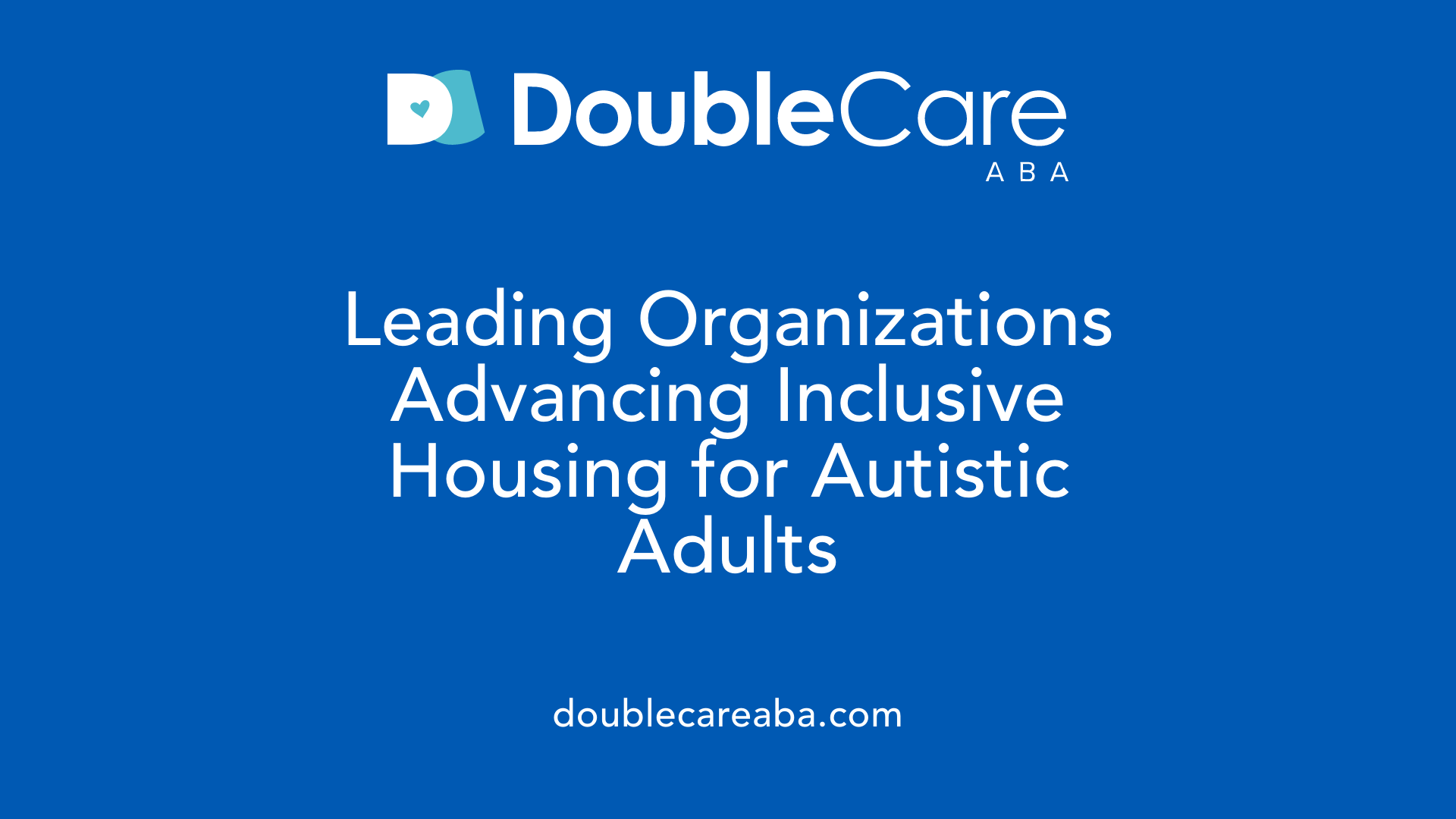 Numerous organizations work tirelessly to improve housing options for autistic adults, each contributing unique resources, programs, and advocacy to foster more inclusive and supportive communities.
Numerous organizations work tirelessly to improve housing options for autistic adults, each contributing unique resources, programs, and advocacy to foster more inclusive and supportive communities.
One prominent entity is the Autism Housing Network, a project operated by the Madison House Autism Foundation. This network serves as a central hub of information, offering a comprehensive directory of existing and emerging housing models. It includes various configurations such as group homes, scattered site housing, cohousing communities, and supportive apartment complexes. The network also provides developer tools and promotes innovative initiatives like neuro-inclusive apartment communities and cohousing, aiming to create environments where autistic adults can thrive independently while feeling connected.
Autism Speaks is another significant supporter in this field. The organization offers practical guidance, including a Transition Roadmap to Housing and Residential Supports, to assist families and individuals in planning for independent living. It also provides an array of resources and toolkits focused on different housing options and the support services necessary for success. Their publications include insights into funding options, qualities to consider when choosing neighborhoods, and assessments such as the Community-Based Skills Assessment (CSA), which helps craft personalized support plans.
In addition to advocacy and resources, several government and nonprofit agencies provide targeted support. The U.S. Department of Housing and Urban Development (HUD) administers programs like the Section 811 Supportive Housing and Housing Choice Vouchers, which are designed to ensure affordable and accessible housing options for low-income adults, including those with autism.
The Corporation for Supportive Housing (CSH) plays a vital role in supporting communities to develop supportive housing solutions specifically tailored for individuals with developmental disabilities. CSH collaborates with local agencies to promote community-based models that focus on independence and community integration.
Local service providers also substantially contribute to this effort. Organizations such as Easterseals, Trinity Services Inc., and the Association for Individual Development offer a range of supported living services, group homes, and residential programs dedicated to meeting the needs of autistic adults. These programs emphasize community involvement, vocational training, and personalized support structures.
The movement toward community-centered, person-directed residential services is gaining momentum, with an emphasis on options like supported living, supervised group homes, cooperative housing, and innovative models like farmstead communities. These models aim to provide stability, independence, and social engagement.
The following table summarizes some notable organizations and the types of housing initiatives they support:
| Organization | Focus Areas | Additional Details |
|---|---|---|
| Autism Housing Network | Housing options, developer tools, community inclusion | Promotes neuro-inclusive communities and innovative housing models |
| Autism Speaks | Planning, assessments, resources | Offers Transition Roadmap and supportive toolkits |
| U.S. Department of Housing and Urban Development (HUD) | Federal support programs | Section 811, Housing Vouchers for affordable housing |
| Corporation for Supportive Housing | Supportive housing development | Focuses on community-based solutions for disabilities |
| Easterseals | Supported living, residential services | Community integration and vocational training |
| Trinity Services Inc. | Residential programs, supportive living | Emphasizes independence and social skills |
These organizations exemplify efforts to expand and improve housing options for autistic adults, addressing critical needs for affordability, accessibility, and community engagement. As the field advances, collaboration among these entities continues to be essential to building inclusive environments that support the independence and well-being of autistic adults.
By leveraging resources from national agencies, nonprofits, and local providers, families and individuals can find pathways toward stable, supportive, and fulfilling housing arrangements that cater to diverse needs and preferences.
Community Integration and Support Services for Autistic Adults
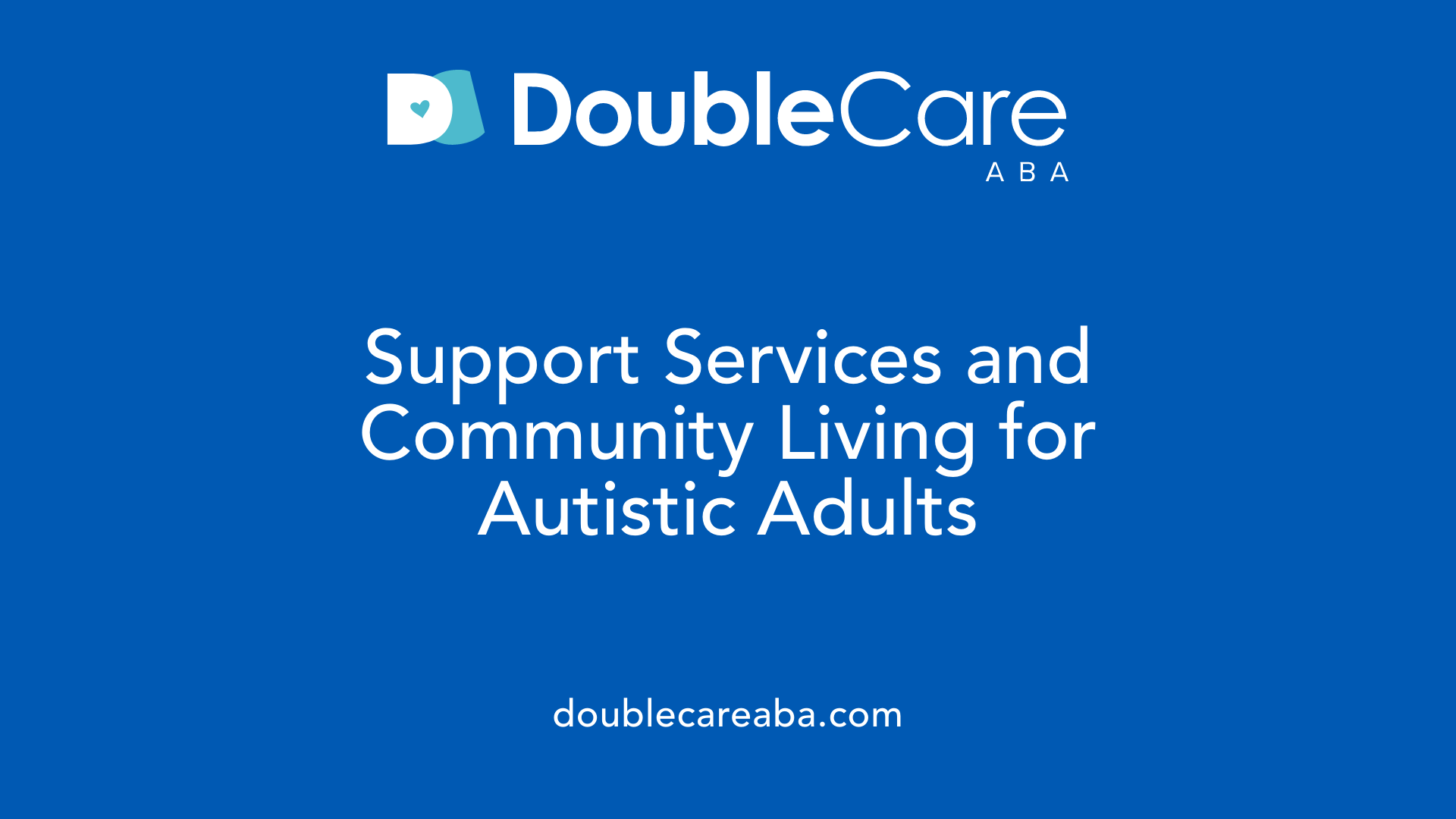
What services and community living arrangements are available for autistic adults?
Autistic adults have access to a broad spectrum of community-based living options and support services designed to foster independence, social engagement, and community participation. These options are tailored to meet varying needs, preferences, and levels of independence.
Support options include supported living arrangements, which help individuals who can live independently with minimal assistance, and supervised or semi-independent living models that provide structured environments with more intensive support. Group homes are a common choice, housing typically between 2 to 10 residents, with onsite staff available for daily assistance and supervision.
For those who prefer more independence, options like supervised apartments, shared living with family or caregivers, or private rental homes are available. Some residents opt for co-op arrangements where residents share living spaces and employ support staff collectively.
Funding for these diverse housing options can come from various sources, including government programs such as Social Security, Medicaid, the Section 811 Supportive Housing program, and housing vouchers, along with private pay options. These resources help make community housing accessible and sustainable.
Organizations like Autism Speaks provide practical tools like the Transition Roadmap to facilitate planning for housing and community integration. This roadmap helps individuals and families prepare for the transition from school-based services to independent living.
In addition, the Autism Housing Network, a project of the Madison House Autism Foundation, offers a comprehensive online directory of innovative housing models across the country. These include traditional group homes, scattered site housing, cohousing communities, and neuro-inclusive apartment complexes that promote diversity and accessibility.
Advocacy groups such as The Arc advocate for expanded community housing options and support services. They highlight the importance of person-centered planning and community involvement, which are crucial for promoting a satisfying and autonomous life for autistic adults.
Why is community involvement important for autistic adults?
Community involvement enhances social connections and reduces feelings of loneliness and depression, which affect many autistic adults. Statistics show that nearly half report feeling lonely, and around 57% experience depression. Engaging in social, recreational, and employment opportunities helps build a sense of belonging and purpose.
Employment is a vital aspect of community integration. Supported employment programs assist autistic adults in finding meaningful work, fostering independence, and contributing to society. These programs often involve vocational training, job coaching, and workplace accommodations.
Social connections, whether through local community groups, hobby clubs, or advocacy organizations, foster a sense of community and help develop essential social skills. Many organizations offer resources and activities specifically designed for autistic adults, making participation meaningful and accessible.
Resources like the Autism Speaks Transition Roadmap and community service providers
The Transition Roadmap provided by Autism Speaks is a valuable planning tool aiding families and individuals in preparing for housing and community living. It guides users through steps such as assessing support needs, exploring housing options, securing funding, and connecting with community resources.
Community service providers like Ada S. McKinley Community Services, Association for Individual Development, Blue Cap, and others across different states offer tailored programs for autistic adults. These programs provide a range of services, including 24-hour supervision, vocational training, social skills development, and community integration support.
Many of these providers emphasize person-centered, community-based services designed to promote independence, vocational opportunities, and active participation in community life.
This collective support system aims to create an environment where autistic adults can thrive, build meaningful relationships, and lead fulfilling lives within their communities.
| Support Level | Typical Housing Types | Support Services | Funding Sources | Notable Examples |
|---|---|---|---|---|
| Minimal to Moderate | Apartments, Co-ops, Shared Homes | Life skill training, employment support | Medicaid, Housing Vouchers, Private Pay | Autism Speaks Transition Roadmap, Autism Housing Network |
| Intensive Support | Group Homes, Supervised Apartments | 24/7 supervision, Behavioral support | State-funded programs, Regional Centers | Ada S. McKinley, Blue Cap, UCP Seguin |
| Family and Community | Foster Homes, Family Living, Community Homes | Family support, social activities | Medicaid, state-specific programs | Arc, Local advocacy groups |
This variety of housing options ensures that each autistic adult can find a supportive community environment suited to their individual needs and goals, promoting inclusive and engaged living.
Towards an Inclusive Future in Autism Housing
Creating accessible, inclusive, and supportive housing options for autistic adults is vital for fostering independence, community participation, and quality of life. As awareness grows and support systems expand, integrating innovative models like neuro-inclusive communities, scattered-site housing, and supportive co-housing initiatives offers promising pathways. Continued advocacy, improved funding, and collaborative efforts among organizations, government agencies, and communities will be key to addressing current shortages, reducing loneliness, and promoting a fully inclusive future for adults on the autism spectrum.















